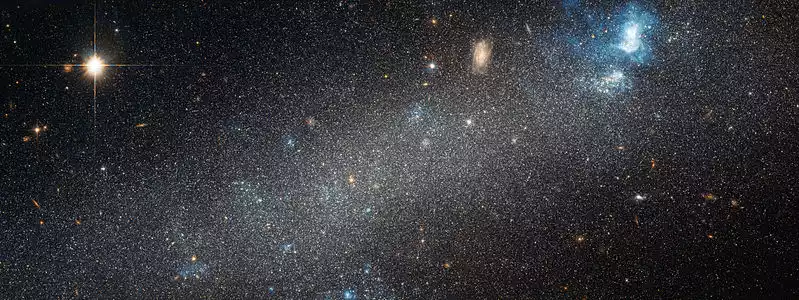Galaxies in Camelopardalis: Unveiling the Cosmic Giraffe

Galaxies in Camelopardalis: Unveiling the Cosmic Giraffe
Camelopardalis, also known as the Giraffe constellation, is a unique and lesser-known constellation located in the northern celestial hemisphere. Within this celestial region lies a fascinating collection of galaxies that offer a glimpse into the wonders of the universe. In this article, we embark on a cosmic journey to explore the galaxies in Camelopardalis, uncovering their characteristics, classifications, and the ongoing research efforts that shed light on their mysteries.
Camelopardalis: The Celestial Giraffe
Camelopardalis derives its name from the giraffe, a majestic animal known for its long neck and graceful presence. While not as widely recognized as other constellations, Camelopardalis offers astronomers a unique opportunity to study the galaxies within its boundaries, contributing to our understanding of galactic structures and evolution.
Galaxy Classification and Diversity
Within Camelopardalis, a diverse range of galaxy types can be found, including spiral, elliptical, and irregular galaxies. Each classification presents valuable insights into their formation, dynamics, and stellar populations. By studying the diverse galactic populations within Camelopardalis, astronomers deepen our understanding of the vast cosmic tapestry.
Notable Galaxies in Camelopardalis
Camelopardalis hosts several notable galaxies that have captured the attention of astronomers. One such example is NGC 2403, a splendid spiral galaxy known for its intricate spiral arms and vibrant star-forming regions. Other galaxies of interest include NGC 1569, an irregular galaxy undergoing intense bursts of star formation, and NGC 1502, a star cluster residing within a diffuse emission nebula.
Galactic Clusters and Associations
Camelopardalis is also home to galactic clusters and associations, where groups of galaxies interact and influence each other's evolution. These clusters provide valuable insights into galactic dynamics, the distribution of dark matter, and the processes that shape cosmic structures. Notable clusters within Camelopardalis include the Camelopardalis Cluster and the Stock 23 open cluster.
Ongoing Research and Discoveries
Astronomers are actively conducting research on galaxies in Camelopardalis using advanced telescopes and observational techniques. Ongoing studies focus on understanding the formation and evolution of galaxies, the interplay between stellar populations and the surrounding environment, and the role of galactic interactions in shaping cosmic structures within this celestial realm.
The Future of Galaxies in Camelopardalis
With advancements in technology and future missions, such as the James Webb Space Telescope, our exploration of galaxies in Camelopardalis is poised to reach new frontiers. These upcoming endeavors hold the promise of unveiling further insights into galactic evolution, star formation processes, and the intricate workings of the universe within Camelopardalis.
Conclusion
The galaxies within Camelopardalis invite us to embark on a cosmic adventure, expanding our understanding of the vastness and beauty of the universe. From their diverse classifications to their unique features, these galaxies provide valuable insights into the formation and evolution of cosmic structures. Ongoing research and future explorations will continue to unlock the mysteries hidden within Camelopardalis, enriching our understanding of the cosmos and our place within it.
So, the next time you cast your gaze upon the constellation of Camelopardalis, remember the hidden galaxies within, waiting to be discovered and offering a glimpse into the marvels of the celestial giraffe.